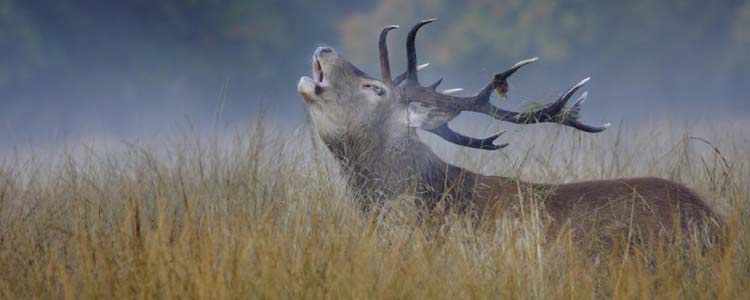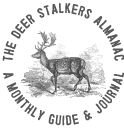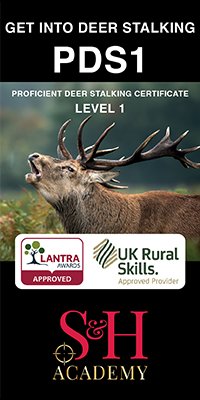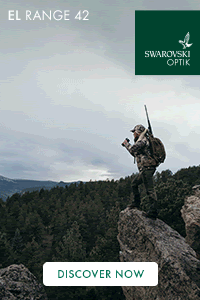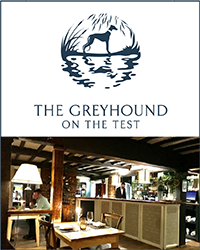Tony Malkin offers a glimpse into his new book, The Efficient & Effective Deer Stalker, where he provides a practical breakdown of the essential equipment every stalker needs for a successful outing.
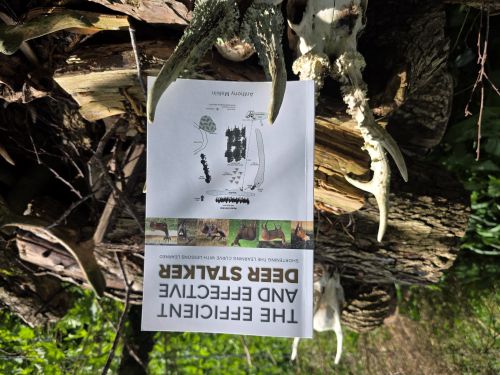
Successful deer stalking requires careful preparation and efficient organisation of equipment. Having the right tools in the right place not only ensures safety but also enhances the enjoyment and productivity of the experience. Essential equipment can be grouped into three categories:
- What is carried on the stalker
- What goes into the roe sack
- What is stored in the vehicle.
1. Carried on the Stalker
To be self-sufficient in any stalking circumstance, I recommend that you have the following as a minimum in your pockets:
- A sharp, straight-edged knife is essential and should always be clean and ready for use. Straight-edged blades are easier to sharpen, and a brightly coloured handle helps ensure it is visible in low light. The knife should be stored in a washable scabbard to maintain hygiene.
- Alongside the knife, a small knife sharpener and a small chest saw, also kept in a washable scabbard, are indispensable tools.
- Rubber gloves are another must-have, with many stalkers opting for reusable varieties like “Marigolds.” Carrying three gloves is practical, as two can be worn while the third provides a sterile resting place for tools during the gralloch.
- Other essential items include a carcass recovery strap for carrying smaller deer species and dragging the larger ones, a small head torch for hands-free lighting, and hearing protection, whether in the form of plug-in ear defenders or overhead models.
Learned Lesson
I had just culled a young fallow buck and was feeling very self-satisfied. With a couple of stalking hours left, I went to a small wood and tried my luck not really expecting to see any more fallow as it was now mid-morning. To my surprise, I disturbed three mature fallow bucks at 100m away. Two moved away but a third casually stood up and stood broadside to me. I took the shot, and he dropped.
Having cleaned my knife after the earlier cull, I did not think to resharpen it. Consequently, I pushed the blade too hard around the throat area and stabbed myself in the fleshy part of my left thumb. Now there was more of my blood than from the buck! With the blade at least a quarter of an inch sticking in the thumb and feeling so ridiculous and stupid, I pulled the knife out and dressed the wound with the first aid kit from my roe sack.
The Moral of the story is to always clean and sharpen your knife after every cull and carry a first aid kit, as they come in handy!
2. Equipment In the Stalkers Roe Sack
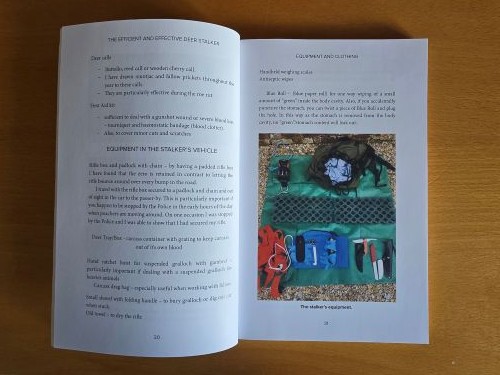
When packing your roe sack for a day’s stalking, it’s important to include equipment that complements what you carry on your person, ensuring you’re prepared for various situations. Here’s a rundown of the essentials:
- Ammunition: Pack enough for the stalk—typically four rounds in the magazine, plus an additional four spares. Keeping the magazine loaded with four rounds prevents weakening the spring and simplifies accounting for spent rounds after the outing.
- Backup Tools: Include a second knife and chest saw as reliable spares, ready to step in if your primary tools are damaged or misplaced.
- Rubber Gloves: As mentioned earlier, ensure you have gloves on hand for hygiene during the gralloching process.
- Large Light Source: A larger light complements your head torch, proving invaluable when gralloching at last light or recovering a lost carcass in the dark.
- Plastic Bag: Some estates require that the gralloch—both “red” (heart and lungs) and “green” (stomach and intestines)—along with the head and legs, be removed. A plastic bag ensures you can comply with these requirements cleanly and efficiently.
- Inflatable High-Seat Cushion: Comfort is key during long waits in high seats. An inflatable cushion prevents discomfort and reduces the risk of fidgeting, which can alert your quarry.
- Antiseptic Wipes: Carry wipes to maintain hygiene throughout the gralloch process. Use them to clean your knife, chest saw, and hands, especially if they become blood-smeared, before returning tools to their scabbards.
- Deer Calls: Include a Butollo, reed call, or wooden cherry call to attract deer. These calls are effective year-round for muntjac and fallow deer but particularly shine during the roe rut.
- First Aid Kit: Your kit should be robust enough to handle emergencies like gunshot wounds or severe bleeding, with items such as a tourniquet and haemostatic bandage. It should also include supplies for treating minor cuts and scratches, ensuring you’re ready for any mishap.
3. Equipment in the Stalkers Vehicle
When organising your vehicle for a stalking outing, it’s important to ensure it is equipped to safely transport gear, handle carcasses, and manage any unexpected situations. Here’s a list of key items to include:
- Rifle Box with Padlock and Chain: A padded rifle box protects your firearm during transit, helping to maintain the rifle’s zero by preventing it from bouncing over uneven terrain. Secure the box with a padlock and chain, keeping it out of sight to deter theft.
- Deer Tray or Carcass Container: A designated container with a grating is essential for transporting carcasses. The grating elevates the carcass, keeping it out of its own blood to maintain hygiene.
- Hand Ratchet Hoist and Gambrel: This setup is invaluable for performing suspended grallochs, particularly for heavier animals where lifting can be challenging.
- Large Carcass Drag Bag: A drag bag allows for easy and clean transportation of carcasses, especially over long distances or difficult terrain.
- Small Folding Shovel: A compact shovel is a versatile tool, useful for burying the gralloch or digging out your vehicle if it becomes stuck in mud or snow.
- Old Towel: Keep a towel handy to dry your rifle if it becomes wet, ensuring proper maintenance and functionality.
- Handheld Weighing Scales: For those who need to check the weight of a carcass, a small set of scales is a convenient addition to your kit.
- Antiseptic Wipes: Carry plenty of antiseptic wipes to clean your hands and tools after handling the carcass or addressing minor injuries.
- Blue Roll: This versatile paper towel is ideal for managing small amounts of “green” (stomach contents) inside the carcass cavity. If you accidentally puncture the stomach, a twisted piece of Blue Roll can be used to plug the hole and prevent leakage as the stomach is removed.
While this list is not exhaustive, it covers the essentials for a successful and efficient stalk. It is important to strike a balance between being prepared and avoiding unnecessary weight, which can lead to fatigue and reduced concentration. Thoughtful organisation of your equipment ensures that you can focus on the experience, knowing that you are ready for whatever the outing may bring. Good luck!
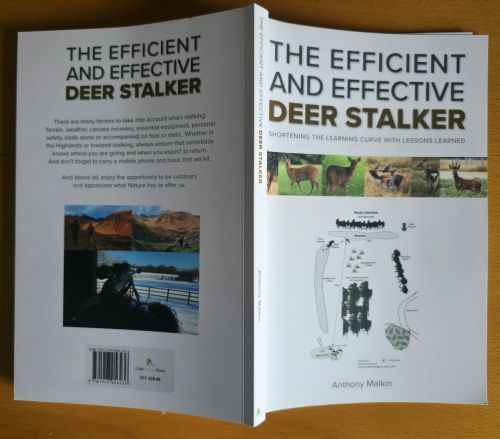
If you would like to read more of Tony Malkins work please purchase his new book ‘The Efficient & Effective Deer Stalker’ by emailing Tony at:
Tony is also the presenter for the Squirrel Management Course Via the Shooting & Hunting Academy. Follow this link to learn more: Grey Squirrel Management Course
Finally, if you would like to get into deer stalking then the PDS1 is the perfect way to start your journey. Find out more here:Proficient Deer Stalking Course - PDS1




